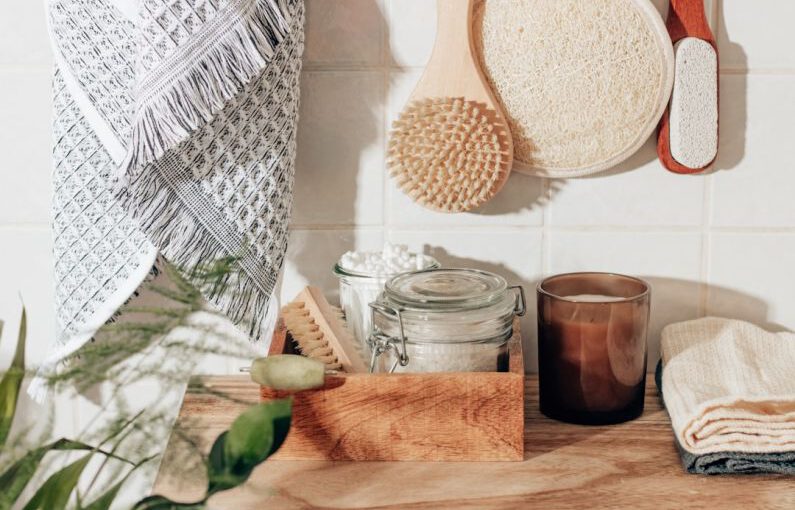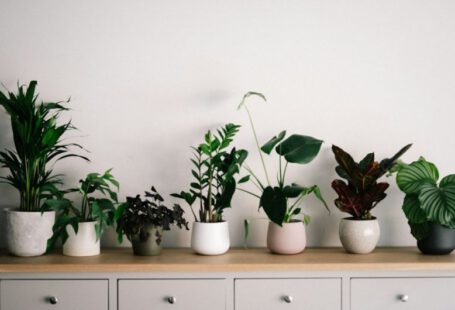In recent years, the focus on sustainability has become increasingly prevalent in all aspects of daily life, including home design. Homeowners and designers alike are now looking for innovative ways to create eco-friendly and energy-efficient living spaces. From incorporating recycled materials to utilizing renewable energy sources, sustainable home design trends continue to evolve. Let’s explore some of the latest trends in sustainable home design that are shaping the way we live and build our homes.
Eco-Friendly Materials
One of the most significant trends in sustainable home design is the use of eco-friendly materials. Designers are now opting for materials that have minimal impact on the environment, such as reclaimed wood, bamboo, and cork. These materials not only reduce the carbon footprint of a home but also add a unique and natural aesthetic.
Another emerging trend is the use of recycled materials in construction. From countertops made of recycled glass to tiles made from reclaimed wood, homeowners are finding creative ways to incorporate recycled materials into their homes. By giving new life to old materials, these designs not only reduce waste but also add character and charm to a home.
Energy-Efficient Appliances and Systems
Energy efficiency is a key component of sustainable home design, and the latest trends focus on incorporating energy-efficient appliances and systems into residential spaces. From smart thermostats that regulate temperature based on occupancy to high-efficiency HVAC systems that reduce energy consumption, homeowners are now prioritizing energy efficiency in their homes.
Solar panels have also become increasingly popular as a way to harness renewable energy and reduce reliance on traditional power sources. By installing solar panels on the roof, homeowners can generate their electricity and even sell excess energy back to the grid. This trend not only helps reduce electricity bills but also contributes to a greener environment.
Indoor Air Quality
Indoor air quality is another important aspect of sustainable home design that is gaining traction in the industry. Designers are now focusing on using non-toxic materials and paints that do not emit harmful chemicals into the air. By choosing low-VOC (volatile organic compounds) paints and finishes, homeowners can create a healthier living environment for themselves and their families.
In addition to using non-toxic materials, designers are also incorporating natural ventilation systems into homes to improve indoor air quality. By strategically placing windows and vents to allow for cross ventilation, homeowners can reduce the need for artificial cooling and heating systems, further lowering energy consumption.
Water Conservation
Water conservation is a critical component of sustainable home design, and designers are now incorporating various strategies to reduce water usage in residential buildings. From installing low-flow fixtures in bathrooms and kitchens to implementing greywater recycling systems, homeowners are finding innovative ways to conserve water in their homes.
Rainwater harvesting has also emerged as a popular trend in sustainable home design. By capturing rainwater from the roof and storing it in tanks, homeowners can reduce their reliance on municipal water sources for tasks such as irrigation and landscaping. This practice not only helps conserve water but also reduces utility costs in the long run.
Outdoor Spaces
In sustainable home design, outdoor spaces play a crucial role in promoting environmental sustainability and connection to nature. Homeowners are now focusing on creating eco-friendly outdoor areas that not only enhance the beauty of their homes but also support local ecosystems.
One of the latest trends in sustainable outdoor design is the use of native plants in landscaping. Native plants are adapted to the local climate and soil conditions, requiring less water and maintenance than exotic species. By incorporating native plants into their gardens, homeowners can create vibrant and biodiverse outdoor spaces that attract local wildlife and promote ecological balance.
Renovation and Retrofitting
Another trend in sustainable home design is the renovation and retrofitting of existing homes to improve energy efficiency and sustainability. Rather than building new structures, homeowners are now opting to upgrade their current homes with energy-efficient appliances, insulation, and windows.
Renovation projects that focus on improving the energy performance of a home, such as adding insulation or upgrading HVAC systems, can significantly reduce energy consumption and lower utility bills. By retrofitting existing homes with sustainable features, homeowners can enjoy the benefits of eco-friendly living without the need for a complete rebuild.
Innovative Technology
Advancements in technology have also played a significant role in shaping the latest trends in sustainable home design. From smart home systems that monitor energy usage to innovative building materials that improve insulation, technology is revolutionizing the way we design and build homes.
One of the most exciting developments in sustainable home design is the integration of smart home technology with energy-efficient systems. Homeowners can now control lighting, heating, and appliances remotely, optimizing energy usage and reducing waste. By incorporating smart technology into their homes, homeowners can achieve greater energy efficiency and sustainability.
In Conclusion
Sustainable home design continues to evolve, driven by a growing awareness of environmental issues and a desire to create healthier living spaces. From using eco-friendly materials to implementing energy-efficient systems, the latest trends in sustainable home design are shaping the way we build and live in our homes. By embracing these trends and incorporating sustainable practices into residential spaces, homeowners can contribute to a greener future while enjoying the benefits of eco-friendly living.





